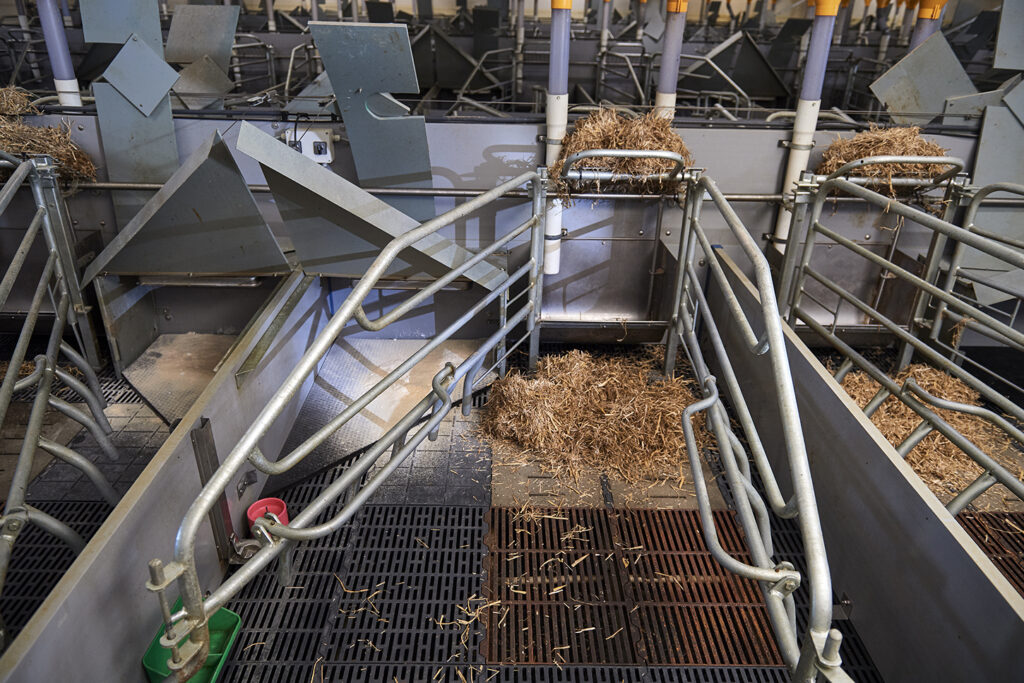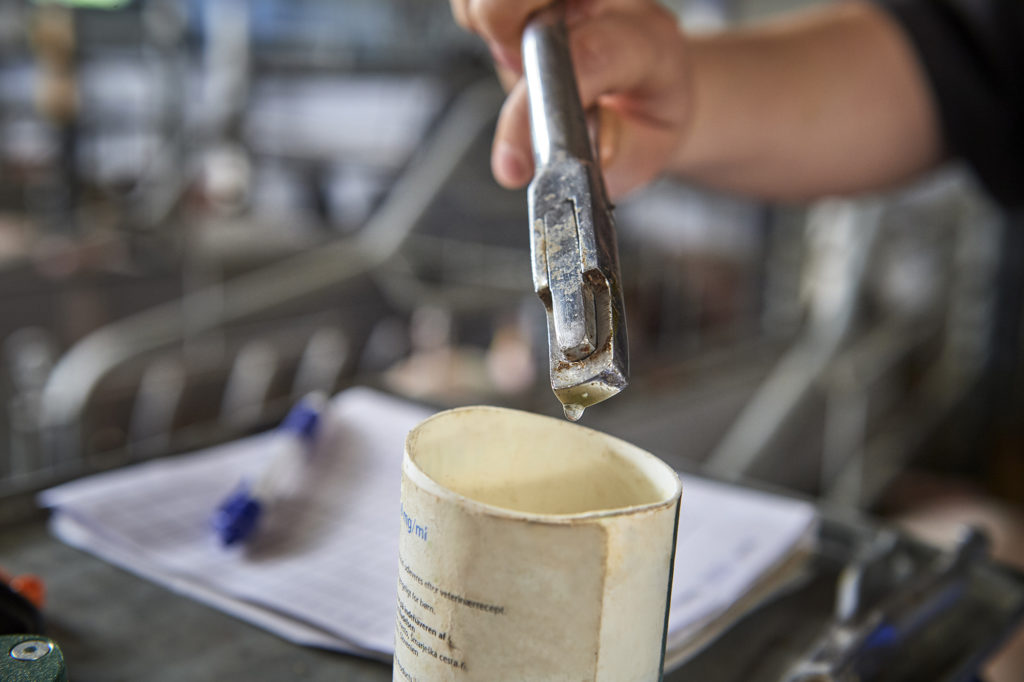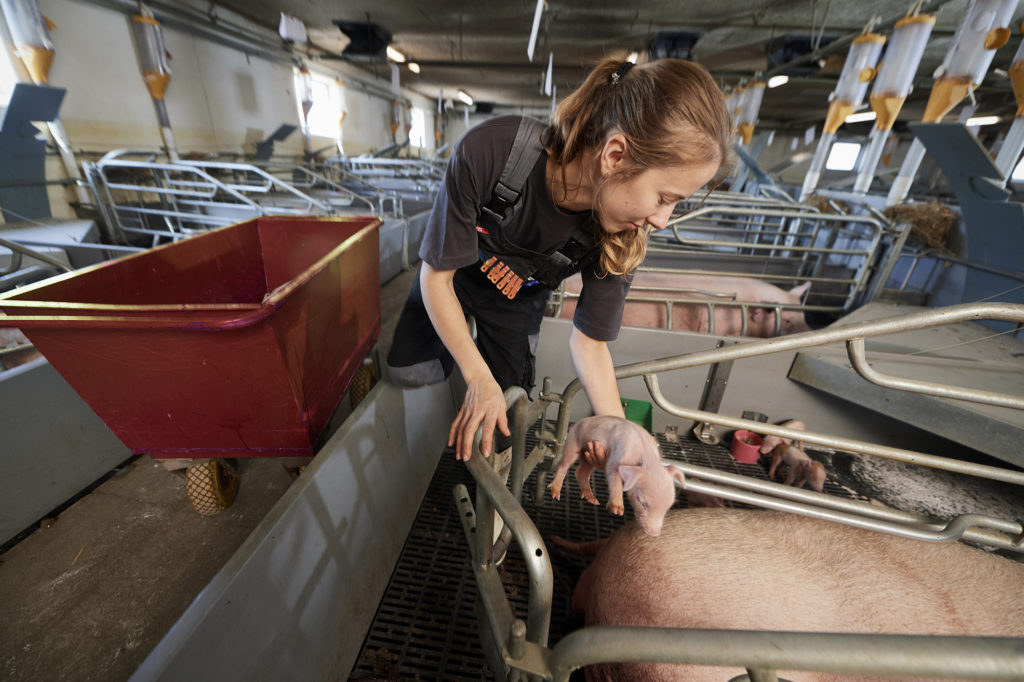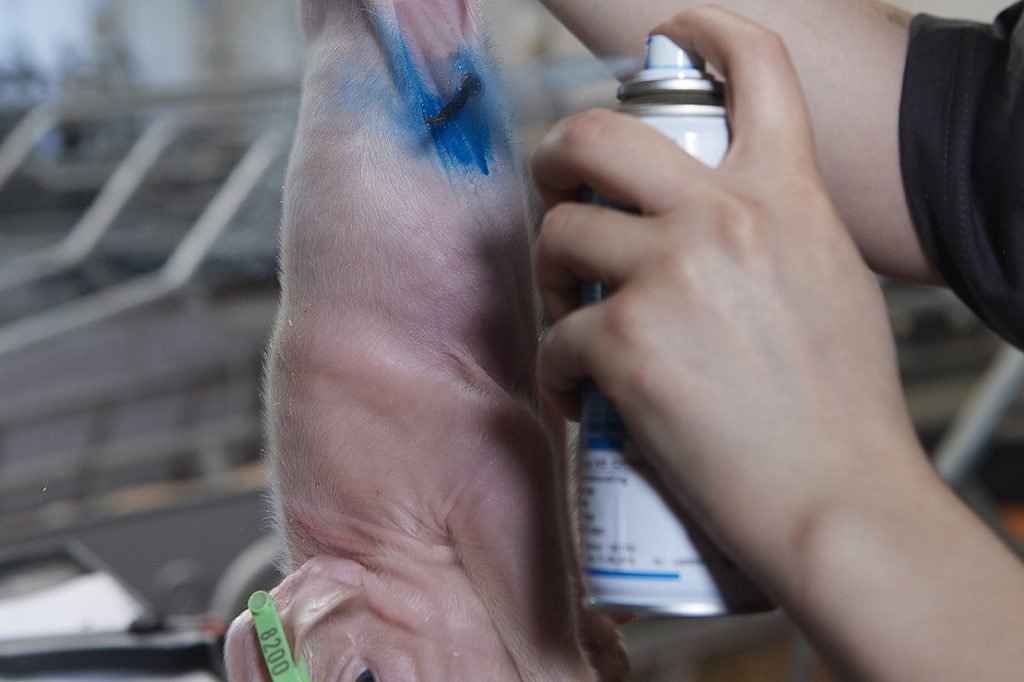Quality assurance of high value breeding stock
Content
How good hygiene reduces the risk of umbilical outpouching development
On farm issues with umbilical outpouchings might indicate that it is time to focus on best management practice within the farrowing and piglet units.
Quality assurance of high value breeding stock
On farm issues with umbilical outpouching (OU), often referred to in literature as umbilical hernia, might indicate that it is time to focus on best management practice within the farrowing and piglet units. In 2002 Vestergaard & Wachmann showed that it is possible to reduce the development of UH in pigs significantly.

Across the world UO can be a problem regardless of genetics, which clearly indicates that UO is primarily caused by external factors – such as poor pen hygiene and incorrect pig handling. That said, DanBred breeding animals are all systematically selected to eliminate UO as well as any other malformations.
A breeding animal which does not meet the DanBred selection standards is immediately removed, to continuously ensure the high value of DanBred breeding animals. The strategy of this approach is to reduce and or eliminate the prevalence of defects in all DanBred genetics.
What is an umbilical outpouching
A bulge near the belly button can have many causes. It can be a true hernia (UH), abscesses, scar tissue or cysts. All of which, will look alike when visually examining the pig.
A bulge caused by UH will occur if the abdominal connective tissue fails to close around the umbilical ring (navel), thus allowing the intestines to protrude through the abdominal wall. The majority of UH are related to inflammation due to infection of the umbilical cord, caused by poor environmental and hygiene conditions. Furthermore, the handling of the piglets, as well as the practice around treatments administered, seems to be of some importance. Bacterial infection and incorrect handling of the young piglet are also the cause of the other conditions diagnosed as an umbilical outpouching.
For these reasons there is variance in the occurrence of UO between herds. Even though UO worldwide leads to losses by reduction of the potential profit, surprisingly few randomised trials has evaluated the effect of management on the occurrences of UO in a professional pig production set up. A Danish trial by Vestergaard & Wachmann (2002) showed that by spraying the umbilical cord with a 5% iodine-alcohol solution within 24 hours after birth, the occurrence of UO was reduced around 25%. Furthermore, this trial showed that preventive treatment with antibiotic within 24 hours after birth reduced the occurrence by 33%. This indicates that it is possible to maintain a continuously low prevalence of UO among high value piglets by focusing on the management of the piglets.
Simple initiatives to assure umbilical health
1. Keep focus on management of umbilical cord with the newly born piglets

-
- Do not pull the umbilical cord when performing farrowing assistance.
- Ensure the umbilical cord is cut as soon as possible- preferably before piglets are moved to the udder.
- Cut the cord with disinfected cutters, to measure no more than 3-4 cm (1.5 inch.).
- Cauterizing cutters can be used for managing the umbilical cords to limit blood loss and effectively close a possible entry point to bacteria.
- An alternative to cutting the cord is pinching or shredding it. Wrap the cord around a finger to cut off blood flow and pinch of the the cord.
- A drying powder can help to dry out the cord and reduce the presence of bacteria.
- 2. Sanitation, hygiene and correct handling of piglets

- Dry out pen floors with an antiseptic desiccant drying powder, avoid wood shavings.
- Ensure the floor surfaces are smooth to protect the piglets.
- Scraping behind the sows twice daily to ensure pen hygiene.
- Pick up piglets by placing the dominant hand palm beneath the stomach without squeezing. Do not pick up piglets by the legs without supporting the chest area.
- 3. Prevent omphalitis

- Use an iodine or alcohol based disinfectant after the umbilical cord is cut.
- Place a patch over the navel to keep bacteria out, and protect the teats in future breeding stock.
- Trials have shown that the preventive use of antibiotics has some beneficial effects but the cost vs. reward should be reviewed with your Veterinary Services Team.
References
Vestergaard, K, Wachmann, H. (2002). Forebyggelse af navlebrok med jod eller antibiotika. Meddelelse nr. 556, Videncenter for Svineproduktion




